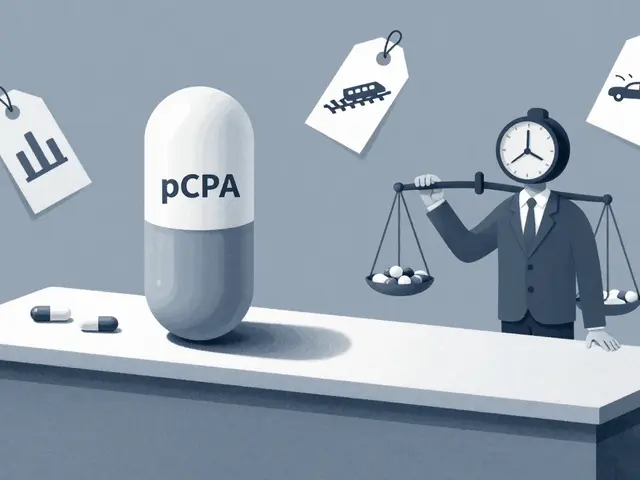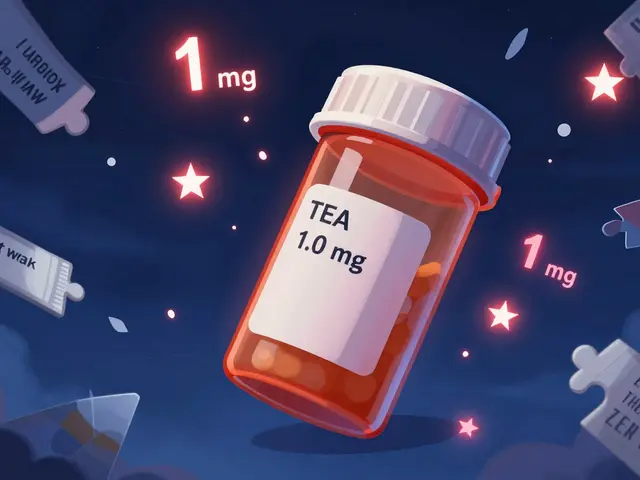Amoxicillin-Clavulanate (Augmentin): What You Need to Know
Amoxicillin-clavulanate — often called Augmentin — pairs a common penicillin (amoxicillin) with clavulanate, which blocks bacteria that would otherwise resist the antibiotic. That makes it a go-to choice for many ordinary bacterial infections that don’t respond to plain amoxicillin.
Doctors prescribe it for sinusitis, ear infections, some chest infections (like bronchitis or mild pneumonia), skin infections, and certain urinary tract infections. It’s not effective for viruses such as colds or the flu. If symptoms don’t improve in 48–72 hours, check back with your clinician.
How to take it safely
Amoxicillin-clavulanate comes as tablets, chewables, or liquid. Take it exactly as your doctor tells you. Typical adult doses vary: common pills are 500/125 mg or 875/125 mg taken every 8–12 hours depending on the strength. Pediatric doses are calculated by weight, so don’t guess — use the pharmacy measure or follow the written instructions.
Take the medicine with food. Food reduces stomach upset and helps your body absorb it better. Finish the full course even if you feel better, unless your doctor tells you otherwise. Stopping early can let the infection return and encourage antibiotic resistance.
Side effects and warnings
Most people tolerate it well. The most common issues are stomach upset, nausea, and diarrhea. If you get severe diarrhea, bloody stools, high fever, or signs of dehydration, contact your doctor — some antibiotics can cause Clostridioides difficile (C. diff) infection, which needs prompt care.
If you have a penicillin allergy (hives, swelling, difficulty breathing after penicillin), do not take amoxicillin-clavulanate and tell your provider. Serious allergic reactions are rare but can be life-threatening. Also mention liver disease, kidney problems, or if you’re pregnant or breastfeeding so your provider can weigh risks and benefits.
Be mindful of drug interactions. Amoxicillin-clavulanate can affect how warfarin works, increasing bleeding risk. It may also change gut bacteria and, rarely, reduce oral contraceptive effectiveness — use backup contraception if you’re worried and consult your provider.
Storage is simple: keep the liquid form refrigerated if the label says so and use within the advised time. Store tablets at room temperature away from moisture and heat.
Want to buy it online? In many countries this drug requires a prescription. Use licensed pharmacies that ask for a valid prescription and show contact details. Avoid sites that sell powerful antibiotics without a prescription — they may send counterfeit or unsafe meds.
Questions about dosing, side effects, or interactions are worth a quick call to your clinic or pharmacist. Antibiotics are powerful tools when used correctly. Treat them with care and follow trusted medical advice for the best results.
Top Alternatives to Flagyl for Dental Infections: Clindamycin, Amoxicillin-Clavulanate, and Best Practices
Struggling with dental infections and can't use Flagyl? This article dives deep into trusted alternatives like clindamycin and amoxicillin-clavulanate, offering straightforward facts and tips for better outcomes. We explore how these antibiotics fit into modern best practice guidelines, highlight common risks and benefits, and bust myths about their use. Whether you're dealing with allergies, resistance, or just want updated advice, you'll find practical, expert-backed insights here. Compare the options, understand when each is best, and discover lesser-known tips to help with oral infection recovery.






